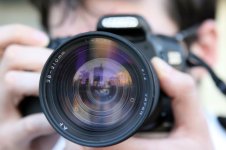Photography is an art that relies heavily on light. Understanding how light enters your camera is crucial to capturing stunning images. One fundamental aspect of controlling light is through aperture settings. In this blog post, we will delve into the world of aperture, exploring its significance, and discussing how it can transform your photography. Whether you're a beginner or an experienced photographer looking to enhance your skills, understanding aperture settings will open up a whole new realm of creative possibilities.

a. Bokeh: Wide apertures, such as f/1.8 or f/2.8, produce beautiful bokeh—a pleasing background blur that isolates the subject. This effect is ideal for portraits, where the subject remains sharp against a dreamy, blurred backdrop.
b. Landscape Photography: For capturing stunning landscapes, a narrower aperture (e.g., f/8 to f/16) is preferred to achieve a deep DoF. This ensures that both the foreground and background are in sharp focus, showcasing the intricate details of the scene.
c. Macro Photography: When photographing small subjects up close, like flowers or insects, a wider aperture can help separate the subject from the surroundings while creating a soft, pleasing background blur.
Conclusion:
Mastering aperture settings is a vital step towards becoming a skilled photographer. By understanding how aperture affects depth
- What is Aperture?
- Aperture and Depth of Field:
- Understanding Aperture Values:
- Creative Effects with Aperture:
a. Bokeh: Wide apertures, such as f/1.8 or f/2.8, produce beautiful bokeh—a pleasing background blur that isolates the subject. This effect is ideal for portraits, where the subject remains sharp against a dreamy, blurred backdrop.
b. Landscape Photography: For capturing stunning landscapes, a narrower aperture (e.g., f/8 to f/16) is preferred to achieve a deep DoF. This ensures that both the foreground and background are in sharp focus, showcasing the intricate details of the scene.
c. Macro Photography: When photographing small subjects up close, like flowers or insects, a wider aperture can help separate the subject from the surroundings while creating a soft, pleasing background blur.
- Balancing Aperture with other Camera Settings:
- Experimentation and Practice:
Conclusion:
Mastering aperture settings is a vital step towards becoming a skilled photographer. By understanding how aperture affects depth
